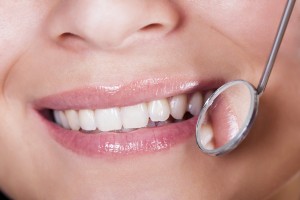 There’s a classic idiom in the English language that compares unpleasant, difficult tasks to pulling teeth. Known as dental extraction, pulling teeth is recommended in some situations. While it’s certainly true that few people are ever excited about having teeth pulled, dental extractions have come a long way, and the procedure is no longer cause for dread.
There’s a classic idiom in the English language that compares unpleasant, difficult tasks to pulling teeth. Known as dental extraction, pulling teeth is recommended in some situations. While it’s certainly true that few people are ever excited about having teeth pulled, dental extractions have come a long way, and the procedure is no longer cause for dread.
Your dentist may recommend extraction for a number of reasons:
– If the tooth is seriously damaged, either due to injury or decay, and can not be saved
– If the tooth to be extracted is a wisdom tooth (third molar), it may cause crowding, alignment problems, pain, or infection
– If the tooth to be extracted is blocking another tooth from coming in
– If the tooth to be extracted is a baby tooth that didn’t fall out in time
– If the tooth to be extracted is causing crowding, a dentist or orthodontist may recommend removing some teeth to allow braces to better adjust the remaining teeth
– If the teeth are infected, or could potentially be an infection source in high risk patients such as those undergoing organ transplants or cancer treatment
Extractions typically fall into one of two classes – simple and surgical. Dentists often perform simple extractions, where oral surgeons often perform surgical extractions. Simple extractions generally involve a single tooth that is visible in the mouth, with clear alignment – after numbing the area with local anesthetic, the tooth will be loosened using an instrument known as an elevator, and then pulled with an instrument known as forceps. For surgical removal, the surgeon may use local anesthetic, moderate sedation, or general anesthesia, and likely use a combination of tools and techniques to remove teeth that may be difficult to see (or still within the gums).
While extractions are very common and generally safe, they do have some risk. The most common complications are dry sockets (where the bone is exposed to air during healing), accidental damage to nearby teeth, and incomplete extractions (where a portion of the tooth remains in the gum). You should talk to your dentist about the risks of these complications.
If your dentist recommends an extraction, it’s likely that you have a potentially serious problem. While it’s unlikely you’ll celebrate the news, you need not fear: there are worse problems to have than pulling teeth.
For more information on tooth extractions and to make an appointment call, Dr. Kirtley at 317-841-1111 or visit his website porcelainveneersindiana
Dr. Kirtley gladly welcomes patients from Spring Hill, Beech Grove and Warren Park.


